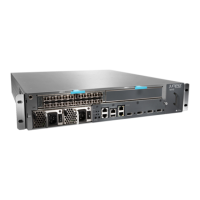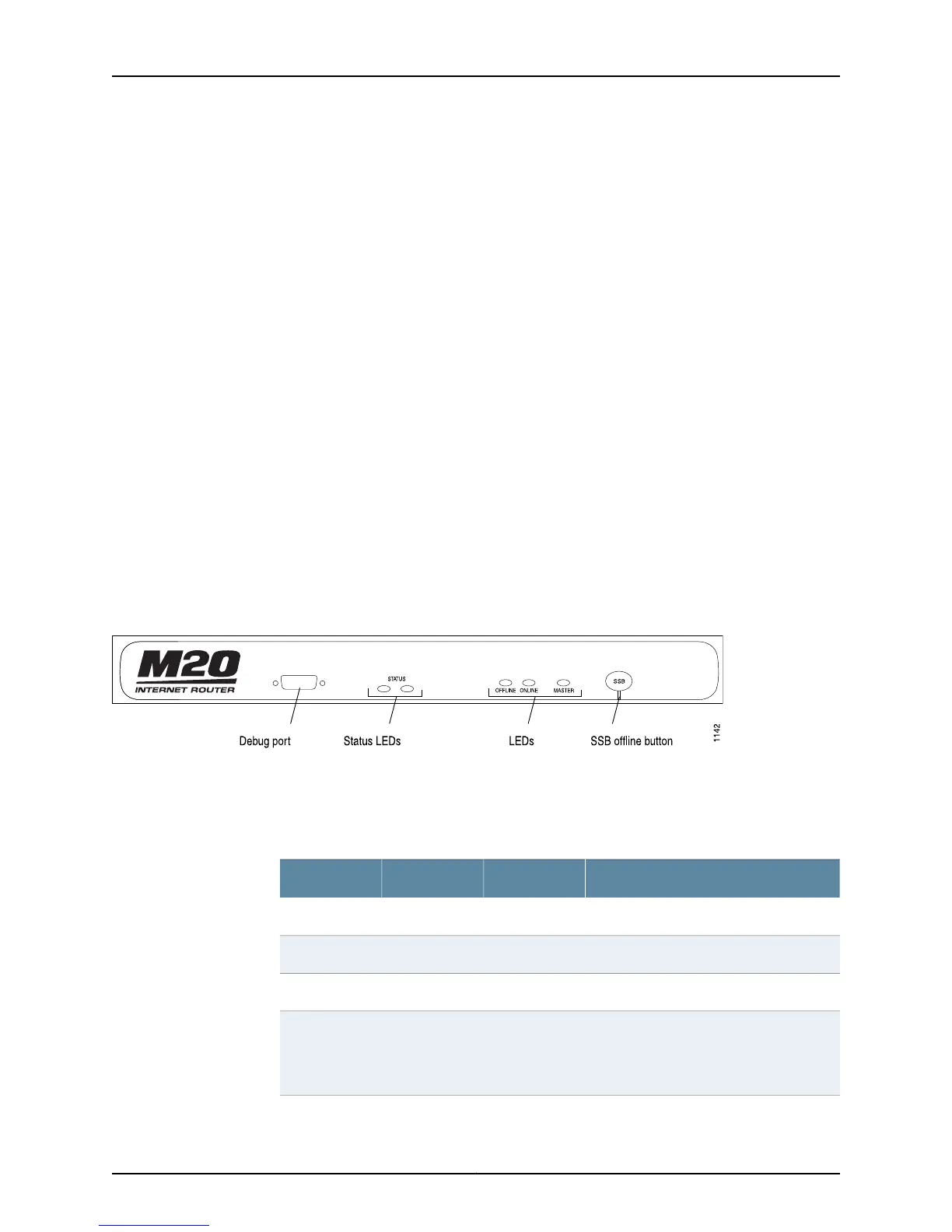Slot 1:
State: Backup
Meaning The command output displays the number of times the mastership has changed, the
SSB slot number 0 or 1, and the current state of the SSB: Master, Backup, or Empty. The
command output displays the temperature of the air passing by the SSB, in degrees
Centigrade. It also displays the total percentage of CPU, interrupt, heap space, and buffer
space being used by the SSB processor, including the total DRAM available to the SSB
processor. The command output displays the time when the SSB started running and
how long it has been running.
To display the status for a particular SSB, use the following command:
user@host> show chassis ssb slot
Check the Redundant SSB LEDs
Purpose To verify the status of the redundant SSB by checking the redundant SSB LEDs.
Action Periodically check the SSB LEDs to verify that the SSB is online or offline and the type
of task it is performing.
To check the SSB LEDs, look on the faceplate at the front of the router (see Figure 340
on page 721).
Figure 340: SSB LEDs
The SSB has two groups of LEDs: online/offline LEDs and status LEDs. The online/offline
LEDs indicate whether the SSB is online or offline. The status LEDs indicate what type
of task the SSB is performing. Table 158 on page 721 describes the SSB LEDs.
Table 158: SSB LED States
DescriptionStateColorLabel
SSB is offline.On steadilyYellowOFFLINE
SSB processor is running.On steadilyGreenONLINE
SSB is master.On steadilyBlueMASTER
SSB processor is running. Normally, the
blinking is faint and becomes bright only
when the SSB is processing many
exceptions.
BlinkingGreenSTATUS (left)
721Copyright © 2012, Juniper Networks, Inc.
Chapter 38: Monitoring Redundant SSBs

